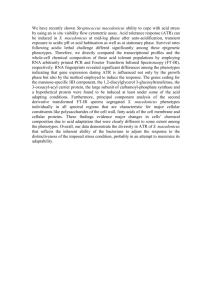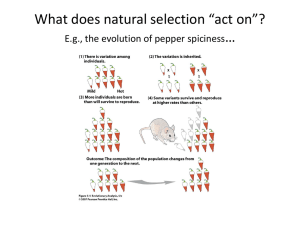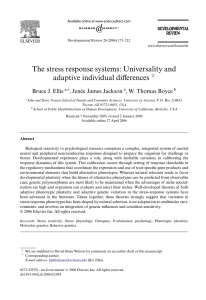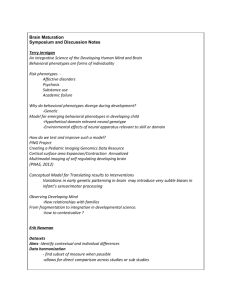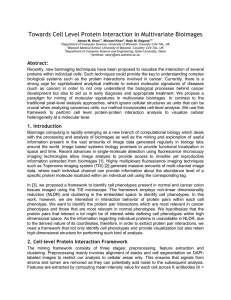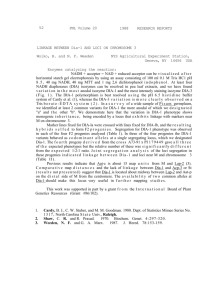Lineage tracking for probing heritable phenotypes at - INL
advertisement
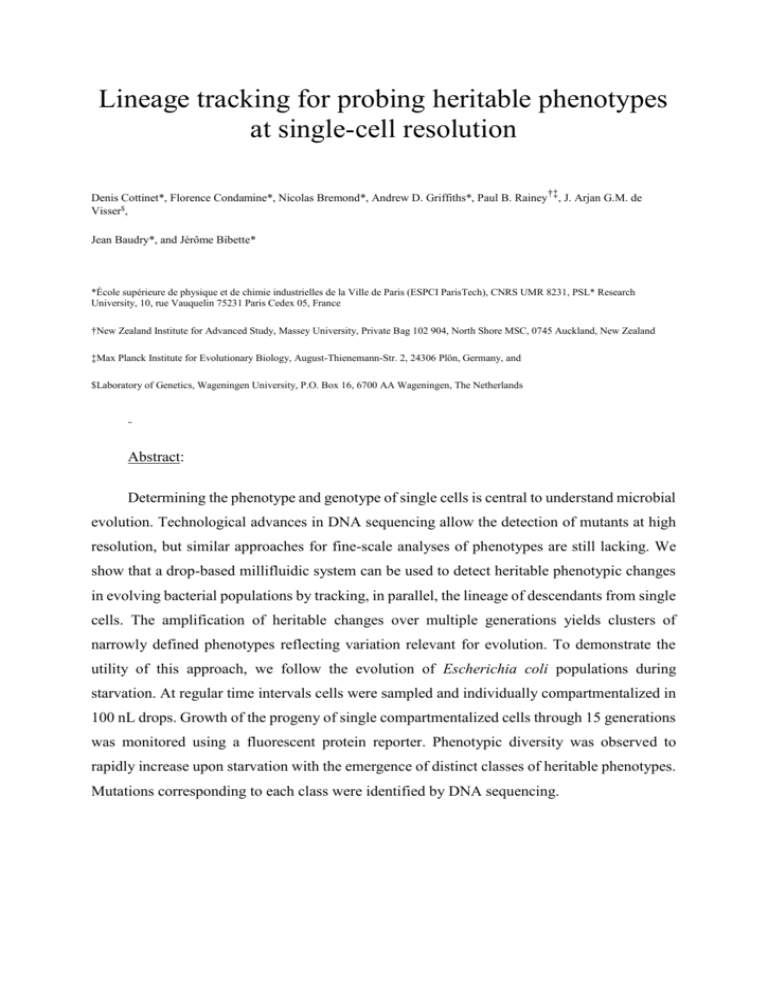
Lineage tracking for probing heritable phenotypes at single-cell resolution †‡ Denis Cottinet*, Florence Condamine*, Nicolas Bremond*, Andrew D. Griffiths*, Paul B. Rainey , J. Arjan G.M. de Visser$, Jean Baudry*, and Jérôme Bibette* *École supérieure de physique et de chimie industrielles de la Ville de Paris (ESPCI ParisTech), CNRS UMR 8231, PSL* Research University, 10, rue Vauquelin 75231 Paris Cedex 05, France †New Zealand Institute for Advanced Study, Massey University, Private Bag 102 904, North Shore MSC, 0745 Auckland, New Zealand ‡Max Planck Institute for Evolutionary Biology, August-Thienemann-Str. 2, 24306 Plön, Germany, and $Laboratory of Genetics, Wageningen University, P.O. Box 16, 6700 AA Wageningen, The Netherlands Abstract: Determining the phenotype and genotype of single cells is central to understand microbial evolution. Technological advances in DNA sequencing allow the detection of mutants at high resolution, but similar approaches for fine-scale analyses of phenotypes are still lacking. We show that a drop-based millifluidic system can be used to detect heritable phenotypic changes in evolving bacterial populations by tracking, in parallel, the lineage of descendants from single cells. The amplification of heritable changes over multiple generations yields clusters of narrowly defined phenotypes reflecting variation relevant for evolution. To demonstrate the utility of this approach, we follow the evolution of Escherichia coli populations during starvation. At regular time intervals cells were sampled and individually compartmentalized in 100 nL drops. Growth of the progeny of single compartmentalized cells through 15 generations was monitored using a fluorescent protein reporter. Phenotypic diversity was observed to rapidly increase upon starvation with the emergence of distinct classes of heritable phenotypes. Mutations corresponding to each class were identified by DNA sequencing.


